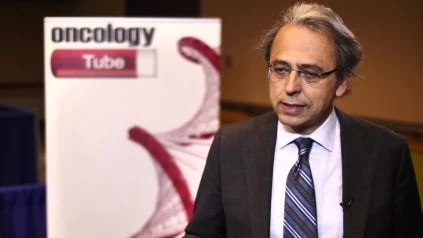Josep Llovet, MD Of Mount Sinai School of Medicine Discusses Ramucirumab Study: Good Safety Profile & Patients With Aggressive Tumors Respond Certainly To RAM.
BACKROUND:
Len, an inhibitor of VEGF receptors 1-3, FGF receptors 1-4, PDGF receptor ?, RET, and KIT, is approved for first-line treatment of unresectable HCC (uHCC) based on the open-label phase 3 REFLECT study in which len showed noninferior overall survival (OS) and significantly improved objective response rate (ORR), progression-free survival (PFS), and time-to-progression (TTP) vs sorafenib. In the phase 2 KEYNOTE-224 study of pembro (a PD-1 inhibitor) as second-line treatment of advanced HCC, pembro showed meaningful clinical efficacy in pts previously treated with sorafenib, with median PFS 4.9 mo, median OS 12.9 mo, and a manageable safety profile. In results from the phase 1b KEYNOTE-524 trial, len+pembro was well-tolerated, with promising antitumor activity in pts with uHCC. LEAP-002 is a phase 3 study to evaluate the safety and efficacy of len+pembro vs len+placebo as first-line therapy for advanced HCC.
METHODS:
Eligible pts are ?18 y and have HCC confirmed by radiology, histology, or cytology; ECOG PS 0/1; BCLC stage C or stage B disease not amenable to locoregional therapy or curative treatment approach; CP class A liver score within 7 days before study; and ?1 measurable lesion by RECIST v1.1. Pts with past or ongoing HCV infection and those with controlled HBV are eligible. 750 pts will be randomized 1:1 to receive len 12 mg (body weight [BW] ?60 kg) or 8 mg (BW <60 kg) orally once daily plus pembro 200 mg or placebo IV Q3W. Pembro and len will be administered until disease progression or unacceptable toxicity, with a maximum 35 cycles for pembro. Stratification will be by geographic region (Asia vs Japan and Western regions); macroscopic portal vein invasion or extrahepatic spread or both (yes or no); alpha fetoprotein ?400 ng/mL vs >400 ng/mL; and ECOG PS 0/1. Primary end points are PFS per RECIST v1.1 by blinded independent central review (BICR) and OS. Secondary end points are ORR, duration of response, disease control rate, and TTP per RECIST v1.1 by BICR, efficacy per modified RECIST, pharmacokinetics, and safety. Imaging assessments will be performed Q9W on study. AEs will be graded per CTCAE v4.0 and monitored up to 90 days after last dose. Clinical trial information: NCT03713593

